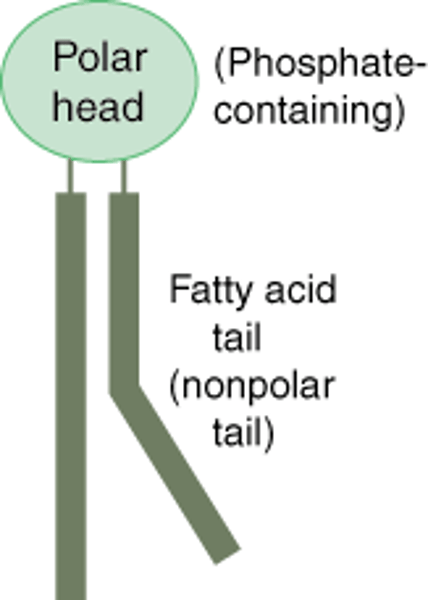AP Bio Unit 1: Chp 3: Carbon and the Molecular Diversity of Life (Lipids)
1/10
There's no tags or description
Looks like no tags are added yet.
Name | Mastery | Learn | Test | Matching | Spaced |
|---|
No study sessions yet.
11 Terms
Lipids
Fats, Phospholipids, and Steroids; Don't form true polymers, are hydrophobic because they consist mostly of hydrocarbons which form nonpolar covalent bonds (very few oxygen atoms)
Fats
Made up of two smaller molecules: glycerol and fatty acids
Glycerol
3-carbon alcohol with a hydroxyl group attached to each carbon
Fatty Acid
Carboxyl group attached to a long carbon skeleton (hydrophobic)
Monomer unit of Lipids
Glycerol and 3 fatty acids joined by -ester linkage, creates a triacylglycerol or triglyceride
Saturated fatty acids
have the maximum number of hydrogen atoms possible and no double bonds, typically solid at room temp
Unsaturated fatty acids
have 1 or more double bonds, typically liquid (move); double bonds "link" structure prevent it from solidifying
Phospholipids
2 fatty acids and a phosphate group are attached to glycerol; the 2 fatty acid tails are hydrophobic but the phosphate group forms a hydrophilic head

Cell membrane is made up of
Phospholipid bilayer, hydrophilic head and hydrophobic tails

Steroids
lipids characterized by a carbon skeleton consisting of 4 fused rings
Cholesterol
A steroid, component in animal cell membranes